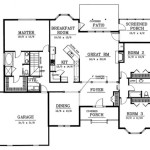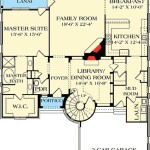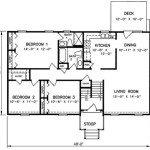Easy Exercise Plan At Home
Maintaining physical fitness is crucial for overall health and well-being. A structured exercise plan implemented at home provides a convenient and accessible method to achieve fitness goals without requiring a gym membership or specialized equipment. This article will outline an easy-to-follow exercise plan that can be executed within the confines of one's home, focusing on various exercises, their benefits, and how to incorporate them into a sustainable routine.
Before commencing any exercise program, it is essential to consult with a healthcare professional, particularly for individuals with pre-existing health conditions. This ensures that the exercise plan is appropriate and safe for their specific needs. Proper warm-up and cool-down routines are also vital components of any exercise plan to prevent injuries and aid in muscle recovery.
A home-based exercise plan should encompass a variety of exercises that target different muscle groups, including cardiovascular exercises, strength training exercises, and flexibility exercises. By incorporating a diverse range of exercises, individuals can improve their overall fitness level and reduce the risk of developing overuse injuries.
Key Point 1: Cardiovascular Exercise at Home
Cardiovascular exercise, often referred to as cardio, is essential for improving heart health, burning calories, and increasing endurance. Several effective cardio exercises can be performed at home without requiring any equipment. These exercises can be adapted to suit different fitness levels, allowing individuals to gradually increase the intensity and duration of their workouts.
Jumping Jacks: Jumping jacks are a classic cardio exercise that involves jumping while simultaneously spreading the legs and raising the arms overhead. This exercise effectively elevates the heart rate and works multiple muscle groups throughout the body. Performing jumping jacks for 30 seconds, followed by a 30-second rest period, can be repeated for several rounds to create a challenging cardio workout. Individuals can modify the intensity by slowing down the pace or reducing the range of motion.
High Knees: High knees involve running in place while bringing the knees up towards the chest. This exercise engages the core muscles and strengthens the legs. To perform high knees effectively, maintain good posture and focus on lifting the knees as high as possible. Similar to jumping jacks, high knees can be performed for 30 seconds, followed by a 30-second rest period, repeated for several rounds.
Butt Kicks: Butt kicks involve running in place while bringing the heels up towards the buttocks. This exercise targets the hamstrings and glutes, improving lower body strength and flexibility. Proper form is essential to prevent injuries. Focus on bringing the heels as close to the buttocks as possible without leaning forward. Butt kicks can be performed for 30 seconds, followed by a 30-second rest period, repeated for several rounds.
Stair Climbing: If stairs are available at home, stair climbing provides an excellent cardio workout. Climbing stairs elevates the heart rate and strengthens the legs and glutes. Individuals can start with a few repetitions of climbing up and down the stairs and gradually increase the number of repetitions as their fitness level improves. Using the handrail for support is recommended, especially for beginners.
Dancing: Dancing is a fun and engaging way to get cardio exercise at home. Put on some favorite music and move to the beat. Dancing engages various muscle groups and improves coordination and rhythm. The intensity can be adjusted based on the type of music and the dance moves performed. Aim for at least 30 minutes of dancing to reap the cardiovascular benefits.
Key Point 2: Strength Training at Home
Strength training is crucial for building muscle mass, increasing bone density, and improving overall strength and functional fitness. Many effective strength training exercises can be performed at home using body weight or readily available household items. Consistent strength training can lead to significant improvements in physical performance and overall health.
Push-Ups: Push-ups are a classic bodyweight exercise that targets the chest, shoulders, and triceps. Proper form is essential to avoid injuries. Start in a plank position with hands shoulder-width apart and lower the body towards the ground, keeping the back straight and core engaged. Push back up to the starting position. If standard push-ups are too challenging, modified push-ups can be performed by placing the knees on the ground.
Squats: Squats are a fundamental lower body exercise that targets the quadriceps, hamstrings, and glutes. Stand with feet shoulder-width apart and lower the body as if sitting in a chair, keeping the back straight and chest up. Ensure that the knees do not extend beyond the toes. Return to the starting position by engaging the leg muscles. Variations of squats, such as sumo squats or jump squats, can be incorporated to increase the intensity.
Lunges: Lunges are another effective exercise for strengthening the lower body. Step forward with one leg and lower the body until both knees are bent at a 90-degree angle. Ensure that the front knee is directly above the ankle and the back knee is close to the ground but not touching it. Push back up to the starting position and repeat on the other leg. Lunges can be performed forward, backward, or laterally to target different muscle groups.
Plank: The plank is an isometric exercise that strengthens the core muscles, including the abdominals, back, and obliques. Hold a plank position by resting on the forearms and toes, keeping the body in a straight line from head to heels. Engage the core muscles and avoid sagging or arching the back. Hold the plank for a set amount of time, starting with 30 seconds and gradually increasing the duration as strength improves.
Dumbbell Exercises (Optional): If dumbbells are available, they can be incorporated into various exercises to increase the resistance and challenge the muscles further. Examples include dumbbell squats, dumbbell lunges, dumbbell rows, and dumbbell bicep curls. Selecting an appropriate weight that allows for proper form and controlled movements is important.
Key Point 3: Flexibility and Stretching at Home
Flexibility and stretching are essential for maintaining joint mobility, preventing injuries, and improving overall range of motion. Incorporating regular stretching into the exercise plan can enhance physical performance and reduce muscle soreness. Stretching should be performed after a warm-up or after completing a workout when the muscles are warm and pliable.
Hamstring Stretch: Sit on the floor with legs extended straight out in front. Reach towards the toes, keeping the back as straight as possible. Hold the stretch for 20-30 seconds. This stretch targets the hamstrings and lower back.
Quadriceps Stretch: Stand with one hand holding onto a wall for support. Grab the foot of the opposite leg and pull it towards the buttocks. Hold the stretch for 20-30 seconds. This stretch targets the quadriceps. Ensure that the knee is pointing down towards the ground and the thigh is aligned with the body.
Calf Stretch: Stand facing a wall and place hands on the wall for support. Place one foot slightly behind the other, keeping the back heel on the ground. Lean forward until a stretch is felt in the calf muscle. Hold the stretch for 20-30 seconds. This stretch targets the calf muscles.
Shoulder Stretch: Extend one arm across the body and use the other arm to gently pull it towards the chest. Hold the stretch for 20-30 seconds. This stretch targets the shoulder muscles.
Triceps Stretch: Raise one arm overhead and bend it at the elbow, reaching down towards the middle of the back. Use the other hand to gently pull the elbow further down. Hold the stretch for 20-30 seconds. This stretch targets the triceps muscle.
A sample exercise plan that incorporates these elements might look like this:
Monday: Cardio (30 minutes of jumping jacks, high knees, and butt kicks) followed by stretching.
Tuesday: Strength training (3 sets of 10-12 repetitions of push-ups, squats, and lunges) followed by stretching.
Wednesday: Rest or active recovery (light walking or yoga).
Thursday: Cardio (30 minutes of stair climbing or dancing) followed by stretching.
Friday: Strength training (3 sets of plank and other core exercises) followed by stretching.
Saturday: Rest or active recovery.
Sunday: Long walk or other preferred activity.
This is a basic framework; individuals should adjust the intensity, duration, and frequency of exercises based on their fitness level and goals. Consistency is key to seeing results. It is important to listen to the body and take rest days when needed.

10 Minute Workout For Beginners Easy At Home 2sharemyjoy Com Beginner Routines

Free 30 Day Home Workout Plan S Nourish Move Love

30 Day Beginner Workout Plan S Nourish Move Love

A 31 Day Walking And Strength Training Workout For Beginners

Easy Beginner Workouts At Home Image Search Results Workout Plan Dumbbell

Free 4 Week Workout Plan S Nourish Move Love

No Equipment Easy Workout Daily Beginner At Home Men

20 Minute Home Fitness Workout

40 Beginner Workout At Home Ideas Plan Workouts

A 30 Day Strength Training Routine No Equipment Required








